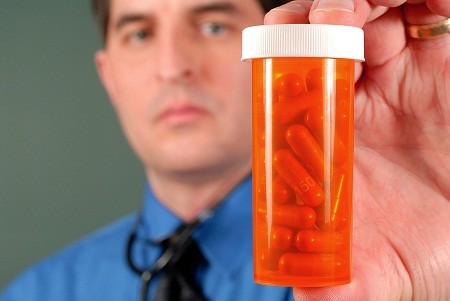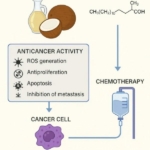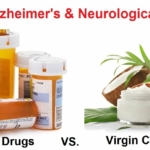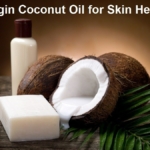
A UK Daily Mail headline from May 2012 read: “Why EVERYONE over 50 needs to be taking statins.”iIf you find the notion that taking medications should be construed as something for everyone, like drinking water or breathing air, as appalling as I do, then you will probably be equally taken aback by this lofty statement.
But to blame the Daily Mail wouldn’t be entirely fair, as they are merely reporting the results of a new study published in theLancet.
Media around the world picked up these findings, but reporters apparently missed the conflict-of-interest disclaimers at the end … which should make any logical person think twice before agreeing with them.
Statins for Everyone Once You Reach Your 50th Birthday?
Millions of people around the world take medications known as statins to lower their cholesterol. Typically, they are reserved for people considered to be at high risk of heart attack or stroke, usually (incorrectly) defined as someone with “high” cholesterol. The current value of the cholesterol-lowering drug industry is estimated at around $29 billion a year – but the pharmaceutical industry is still salivating at the thought of how big that number could get if statins could be prescribed toeven more people.
Well, they must have popped open their most expensive champagne when researchers came to this very conclusion in a recent issue of the Lancet…
After reviewing findings from 27 trials that included people who were at low risk of heart problems, the researchers concluded that the benefits of statins outweigh the risks, to the extent that they may even benefit healthy people without high cholesterol and with little risk of heart attack or stroke. Currently in the UK, the drugs are only recommended for those with at least a 20 percent risk of heart attack or stroke in the next decade, but the researchers suggested the National Health Service (NHS) guidelines should be revised to include their use even in those without an increased risk.
In a commentary also published in the Lancet, it’s written that the most “”cost-effective” way to start prescribing statins to the masses is simply to give them to everyone once they reach age 50:ii
“Because most people older than 50 years are likely to be at greater than 10% 10-year risk of cardiovascular disease, it would be more pragmatic to use age as the only indicator for statin prescription, as was originally proposed for the polypill.”
It is this statement that has transmogrified into the sensational media headlines that make it sound as though statins for over-50s should be the new status quo … but then, where is the mention of who funded all of this favorable statin research? It also makes one seriously consider the influences on the researchers that conducted this study. With so much money at stake it is very hard to believe that the drug industry did not have something to produce or manipulate the recommendations.
Didn’t Anyone Read the Conflicts of Interest Disclaimer?
It’s right there in black and white, at the end of the Lancet study — the stated conflicts of interest:
“Most of the trials in this report were supported by research grants from the pharmaceutical industry. Some members of the writing committee have received reimbursement of costs to participate in scientific meetings from the pharmaceutical industry. AK and JS have also received honoraria from Solvay for lectures related to these studies.”
This changes everything, as it’s well known that pharma-funded studies are often manipulated to show positive results even when the opposite holds true. And researchers who are connected monetarily to the companies producing the products being studied are only all too happy – even if it’s subconsciously — to “massage” the data accordingly.
In the video below, Dr. Beatrice Golomb, MD, PhD — an associate professor of medicine and associate professor of family and preventive medicine at the University of California at San Diego — shares shocking information about the dark underbelly of medical science to help you understand how, and why, the “scientific method” has become so manipulated and willfully distorted by the drug industry.
For starters, in order for scientific studies to happen, someone has to pay for them. The top funder for any drug trial is the pharmaceutical company that makes it, since the manufacturer is most invested in “proving” how spectacular its drug is.
Dr. Golomb uses the case of statins as an example, stating that all of the major statin studies have been funded exclusively by the drug industry. Further, drug companies publish only a fraction of the studies they fund — the ones that promote the “safe and effective” image of their drugs. Often those favorable studies are submitted multiple times, in a way that the reader doesn’t realize it’s the same study, obscured by different author lists and different details. If a study does not have findings that are favorable to its product, it is unlikely it will ever make it into a journal for publication.
But, when a scientific study has findings that cast doubt on the efficacy of a drug, oftentimes the negative findings are morphed into positive ones through statistical and semantic manipulation.
FDA Demands Warning Labels on Statins
It’s ironic that this new research comes in the wake of U.S. health regulators’ orders to put warning labels on statins because they can cause muscle weakness, diabetes, memory loss and depression. The Lancet researchers felt it was more important to avoid heart attacks and strokes than to worry about possible side effects … but statins appear to provoke serious risks of chronic disease, including diabetes, through a few different mechanisms. One primary mechanism is by increasing your insulin levels, which can be extremely harmful to your health.
Chronically elevated insulin levels cause inflammation in your body, which is the hallmark of most chronic disease. In fact, elevated insulin levels lead to heart disease, which, ironically, is the primary reason for taking a statin drug in the first place! It can also promote belly fat, high blood pressure, heart attacks, chronic fatigue, thyroid disruption, and diseases like Parkinson’s, Alzheimer’s, and cancer.
Statins also increase your diabetes risk by raising your blood sugar. When you eat a meal that contains starches and sugar, some of the excess sugar goes to your liver, which then stores it away as cholesterol and triglycerides.
Statins work by preventing your liver from making cholesterol. As a result, your liver returns the sugar to your bloodstream, which raises your blood sugar levels.
These drugs also rob your body of certain valuable nutrients, which can also impact your blood sugar levels. Two nutrients in particular, vitamin D and CoQ10, are both needed to maintain ideal blood glucose levels. The loss of CoQ10 leads to loss of cell energy and increased free radicals which, in turn, can further damage your mitochondrial DNA, effectively setting into motion a health-destroying circle of increasing free radicals and mitochondrial damage.
There are no official warnings in the United States regarding CoQ10 depletion from taking statin drugs, and many physicians fail to inform you about this problem as well. Labeling in Canada, however, clearly warns of CoQ10 depletion and even notes that this nutrient deficiency “could lead to impaired cardiac function in patients with borderline congestive heart failure.”
As your body gets more and more depleted of CoQ10, you may suffer from fatigue, muscle weakness and soreness, and eventually heart failure, so it is imperative if you take statin drugs that you take CoQ10 or, if you are over the age of 40, or subject to excessive oxidative stress, the reduced version called ubiquinol. This is only a short list, as statin drugs have been directly linked to over 300 side effects,iii which include:
| Cognitive loss | Neuropathy | Anemia |
| Acidosis | Frequent fevers | Cataracts |
| Sexual dysfunction | An increase in cancer risk | Pancreatic dysfunction |
| Immune system suppression | Muscle problems, polyneuropathy (nerve damage in the hands and feet), and rhabdomyolysis, a serious degenerative muscle tissue condition | Hepatic dysfunction. (Due to the potential increase in liver enzymes, patients must be monitored for normal liver function) |
Most People Don’t Need Statins, Regardless of Age
I’ve long stated that the odds are very high — greater than 100 to 1 — that if you’re taking a statin, you may not even need it. To understand why you probably don’t need a statin drug, you first need to realize that cholesterol is NOT the cause of heart disease. If your physician is urging you to check your total cholesterol, know that this test will tell you virtually nothing about your risk of heart disease, unless it is 330 or higher. HDL percentage is a far more potent indicator for heart disease risk. Here are the two ratios you should pay attention to:
- HDL/Total Cholesterol Ratio: Should ideally be above 24 percent. If below 10 percent, you have a significantly elevated risk for heart disease.
- Triglyceride/HDL Ratio: Should be below 2.
Moreover, the waist-to-hip ratio, apolipoprotein a/b ratio, fibrinogen and an increasingly complex number of factors have been identified that, collectively, have far more relevance in determining your cardiovascular disease and/or cardiac mortality risk than any as yet to be identified lipid or lipoprotein in your blood. Is our lipid-obsession, then, really justified, or is it an integral part of a $29-billion statin drug industry that requires myopia and a general dumbing down of the medical community in order to perpetuate itself?
The truth is, statins are some of the most side-effect-ridden medications on the market, and they frequently cause more harm than good. If you are interested in optimizing your cholesterol levels (which doesn’t necessarily mean lowering them), and in lowering your risk of heart attack and stroke naturally, there are many strategies available for doing so.
- Reduce, with the plan of eliminating, grains and sugars (including fructose) in your diet, replacing them with mostly whole, fresh vegetable carbs. Also try to consume a good portion of your food raw.
- Make sure you are getting enough high quality, animal-based omega 3 fats, such as krill oil.
- Other heart-healthy foods include olive oil, coconut and coconut oil, organic raw dairy products and eggs, avocados, raw nuts and seeds, and organic grass-fed meats as explained in my nutrition plan
- Optimize your vitamin D levels using safe sun exposure, a safe tanning bed or a vitamin D3 supplement
- Exercise regularly, especially with Peak Fitness exercises.
- Avoid smoking or drinking alcohol excessively.
- Be sure to get plenty of good, restorative sleep.
References:
From The Cholesterol Myths by Uffe Ravnvskov, MD, PhD, NewTrends Publishing, pp 64-65.




 Research Continues to Show Virgin Coconut Oil's Effectiveness in Treating Cancer
Research Continues to Show Virgin Coconut Oil's Effectiveness in Treating Cancer Coconut Oil Continues to Benefit Alzheimer's Patients over Drugs as Studies Continue for Neurological Benefits
Coconut Oil Continues to Benefit Alzheimer's Patients over Drugs as Studies Continue for Neurological Benefits How the Simple High-Fat Low-Carb Ketogenic Diet Continues to Change People's Lives
How the Simple High-Fat Low-Carb Ketogenic Diet Continues to Change People's Lives New Studies Continue to Show that Coconut Oil is the Best Oil for Treating Skin Conditions and Maintaining Healthy Skin and Teeth
New Studies Continue to Show that Coconut Oil is the Best Oil for Treating Skin Conditions and Maintaining Healthy Skin and Teeth New Study Confirms Health Benefits of Coconut Oil and USDA False Claims Against It
New Study Confirms Health Benefits of Coconut Oil and USDA False Claims Against It